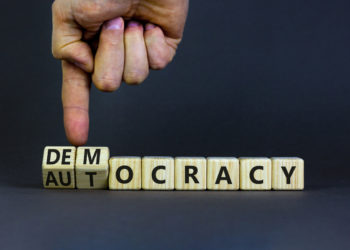 The literature in support of scholarly publishing is sparse at best. Though there are high quality journals such as Learned Publishing and the Journal of Electronic Publishing, the coverage of topics is varied, and it is difficult to obtain a full picture of the changes and challenges affecting our industry. That is what makes the recently released book entitled “Academic & Professional Publishing” valuable as it provides insights on how our work has been fundamentally reshaped and what may lay ahead.
The literature in support of scholarly publishing is sparse at best. Though there are high quality journals such as Learned Publishing and the Journal of Electronic Publishing, the coverage of topics is varied, and it is difficult to obtain a full picture of the changes and challenges affecting our industry. That is what makes the recently released book entitled “Academic & Professional Publishing” valuable as it provides insights on how our work has been fundamentally reshaped and what may lay ahead.
A thoughtful overview of the landscape combined with an in-depth look at specific areas will be useful for anyone involved in scholarly publishing. Managers will value it as a reference work that provides context for discussions and data for presentations. Anyone changing jobs will benefit from a current analysis of less familiar areas as they prepare for interviews and new roles. Students or graduates considering a career in publishing or choosing to engage in publishing activities will gain an understanding of the current environment. Since publishing is learned on the job with the support of classes, workshops and webinars offered by the professional societies (STM, ALPSP, AAP/PSP, SSP), this book will also serve as an excellent resource for training.
The editors (Robert Campbell, Ed Pentz, and Ian Borthwick) have recruited highly qualified individuals to describe the state of digital publishing and share their perspective on future developments. Twenty chapters are split between those addressing operational aspects such as peer review, product development, business models, workflow, sales, managing relations, and those speaking to broader environmental factors such as metrics, standards, ethics, journal future, libraries, ecosystem, and external forces. Three of the chapters were contributed by fellow Chefs here in the Scholarly Kitchen:
- Michael Clarke — “The Digital Revolution”
- Todd Carpenter – “Electronic Publishing Standards”
- Kent Anderson – “External Forces and their Impacts”
Each chapter features an abstract and a list of notes and sources with links for further reference. There are many illustrations such as the chart that shows the journal article workflow at Taylor & Francis and interesting data points such as the note that the US, UK, and Germany produce more than half the PhDs in OECD countries. The index reveals key topics (such as the Big Deal and open access) that are mentioned by authors in different areas.
Reviewing this book had the feel of attending a productive meeting with a mix of interesting facts, worthwhile references, and different perspectives on important topics providing food for thought. Much like looking in a three way mirror, we recognize the familiar and realize that there are dimensions that we hadn’t seen before.
A recurring theme is recognition of the level of adaptation that has already occurred in scholarly publishing with the transformation of editorial and production workflows. Another theme is trust as a core value and part of the culture that is evident in the brand of a journal – for authors submitting articles, for readers setting alerts and for subscribers buying journals. Widely implemented policies and processes support integrity in communicating the scholarly record of research.
Driving the growth of publications is the total global investment in research funding which results in journal articles. There are approximately 12M researchers at 4500 institutions in 180+ countries who create ~1.8M peer-reviewed articles that appear in ~27,000 journals produced by 3500 publishers each year. Although a greater amount of research is conducted by the private sector, basic research is funded by governments because it is viewed as critical for economic success and national well being.
Looking ahead, here are a few highlights of authors’ expectations for future developments.
- Diverse peer review models will evolve that speed publication and reduce demands on reviewers.
- Dramatic growth of research in Asia will tip the balance of publications away from North America.
- While the web is the dominant means of distribution there is a niche market for printed products.
- Economies of scale alone are not sufficient for long term success without the benefit of Network Effects where the value of publications increase exponentially the more they are used.
- Expect greater automation in content production workflows.
- Interoperability is essential to cost-effective digital publishing.
- Adoption of a unique researcher identification sets the stage for development of author-level metrics.
- APIs enable a modular approach to product development in which content, applications and platforms are combined into custom solutions with relative ease.
- Watch for changes in the medium of authorship (i.e. other than Word docs) with video abstracts and more visualization.
- Digital skills (media, analytics, marketing) and leadership/management skills are needed to guide publishing through its next phase.
The authors felt uncertain about the outlook which is understandable given the unpredictable nature of disruptive innovation. Several felt that we are in the middle of the digital revolution which is still ahead of us.
Perhaps the most exciting aspect of our future lies in the development of born digital products that are not conceived through the filter of legacy systems and are designed to meet the needs of a networked population. Michael Clarke expressed it well in his chapter on the Digital Revolution:
We are now seeing the first stirrings of entirely new types of information products, delivered across a dizzying array of devices, through an ever-expanding universe of business models, and via formats that are evolving before our eyes. In this sense the digital revolution is just beginning as we are in the process of shifting to digital native products and services that are conceived, developed and delivered via digital means.
Most of think of incunabula as “early printed books.” Michael referenced the Latin definition which is “swaddling clothes” or “cradle.” It seems as though we have come full circle having survived the transition from print to digital and are now at the inception of the born digital era that will see the transformation of content. So the fun has just begun!
Discussion
8 Thoughts on "Book Review — "Academic and Professional Publishing""
The e-book is only available as part of a package whereby you pay for access to the publisher’s entire list of 2012 titles, at a price of 1,595 GBP (=$2,412 US). That’s the most expensive e-book I’ve ever heard of.



